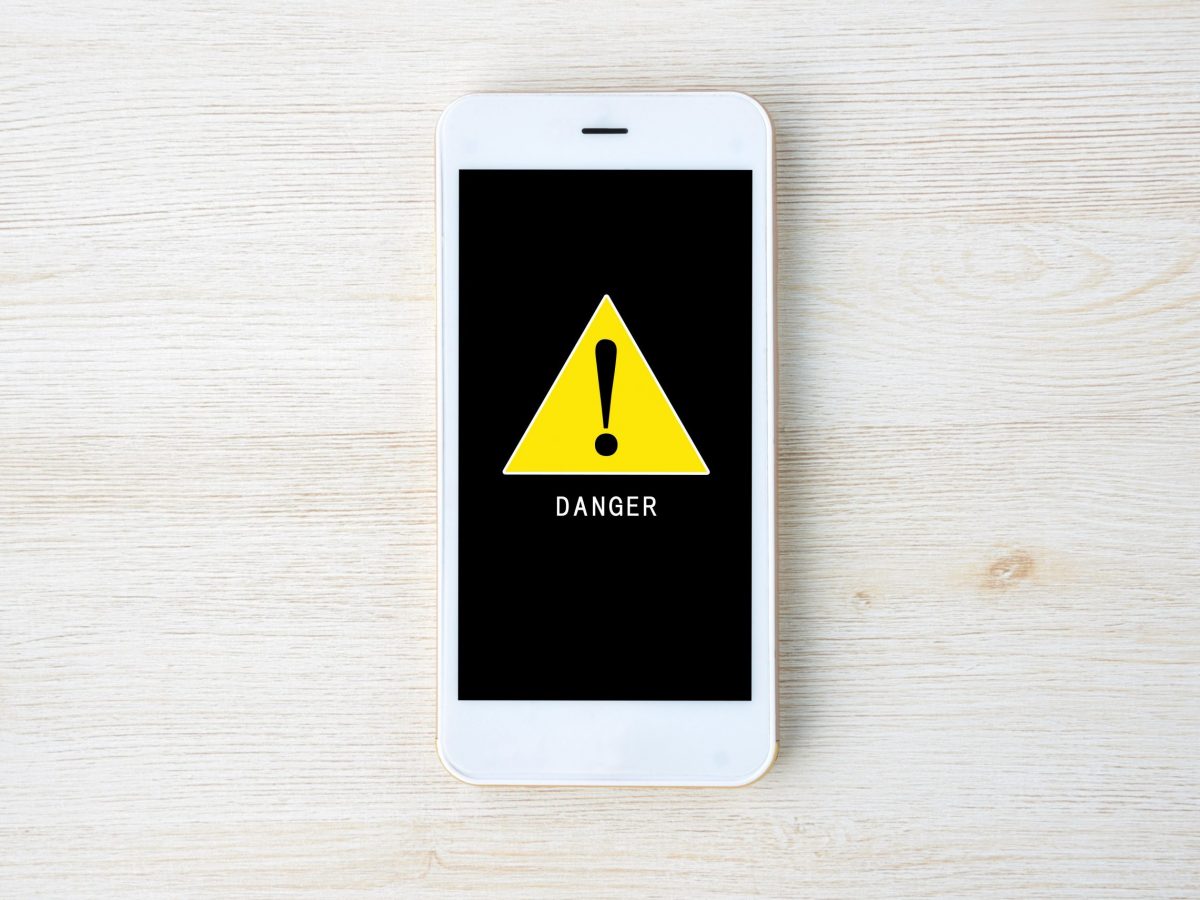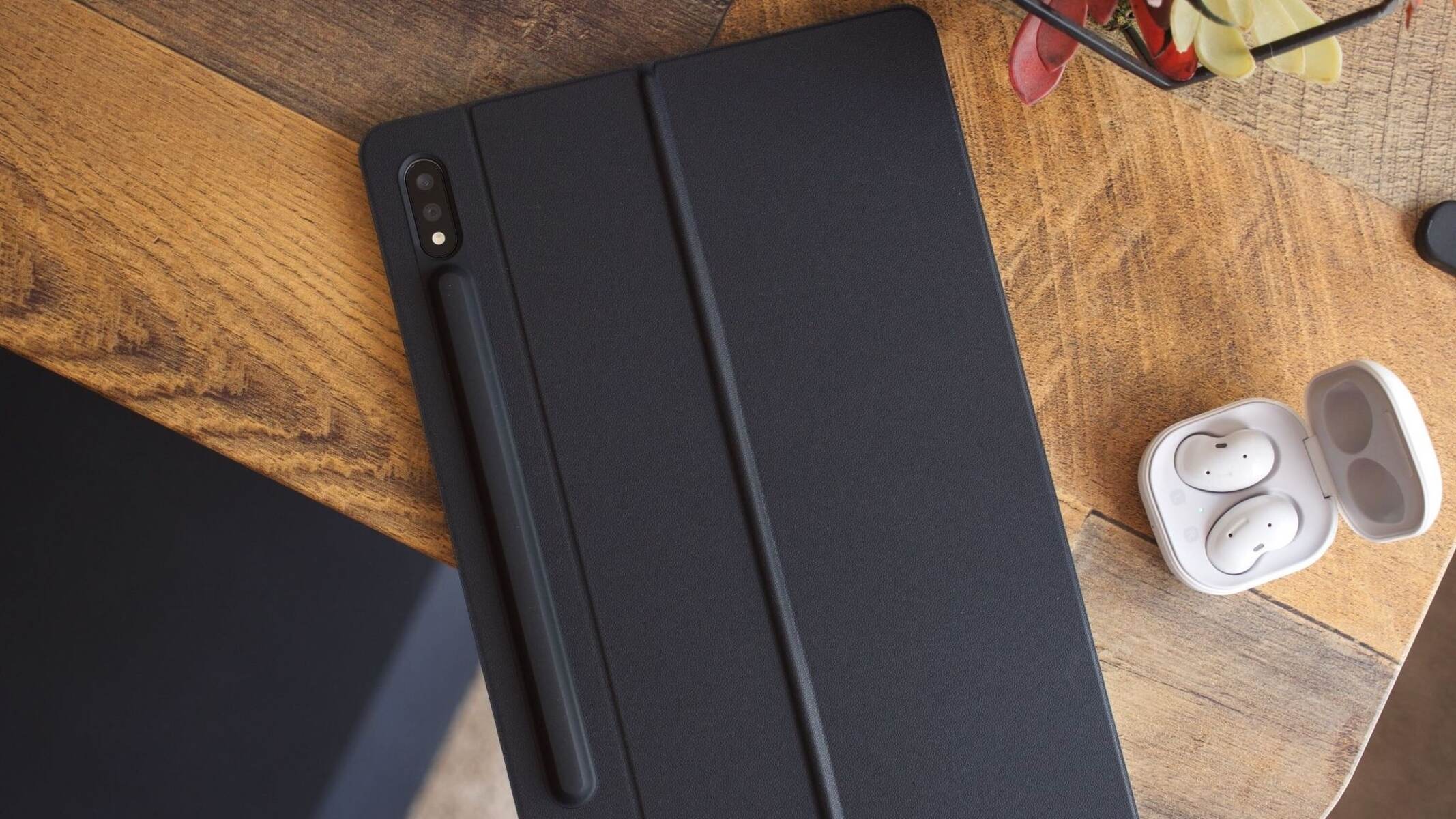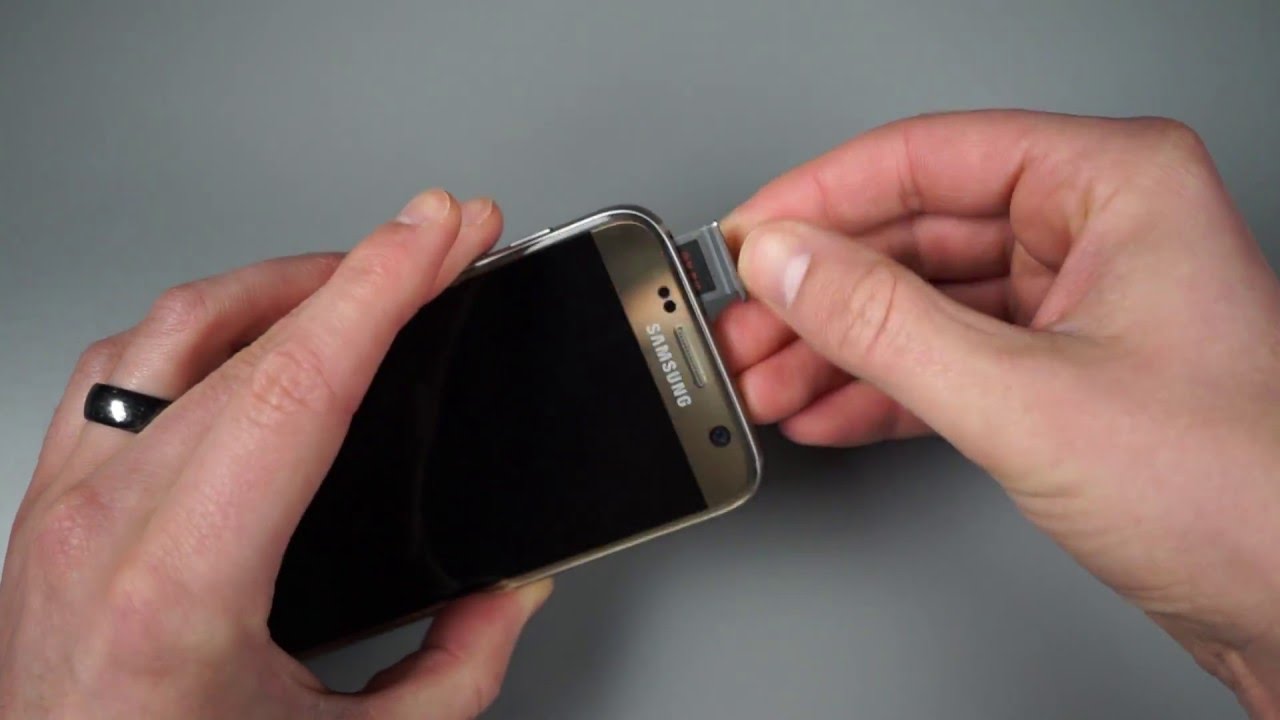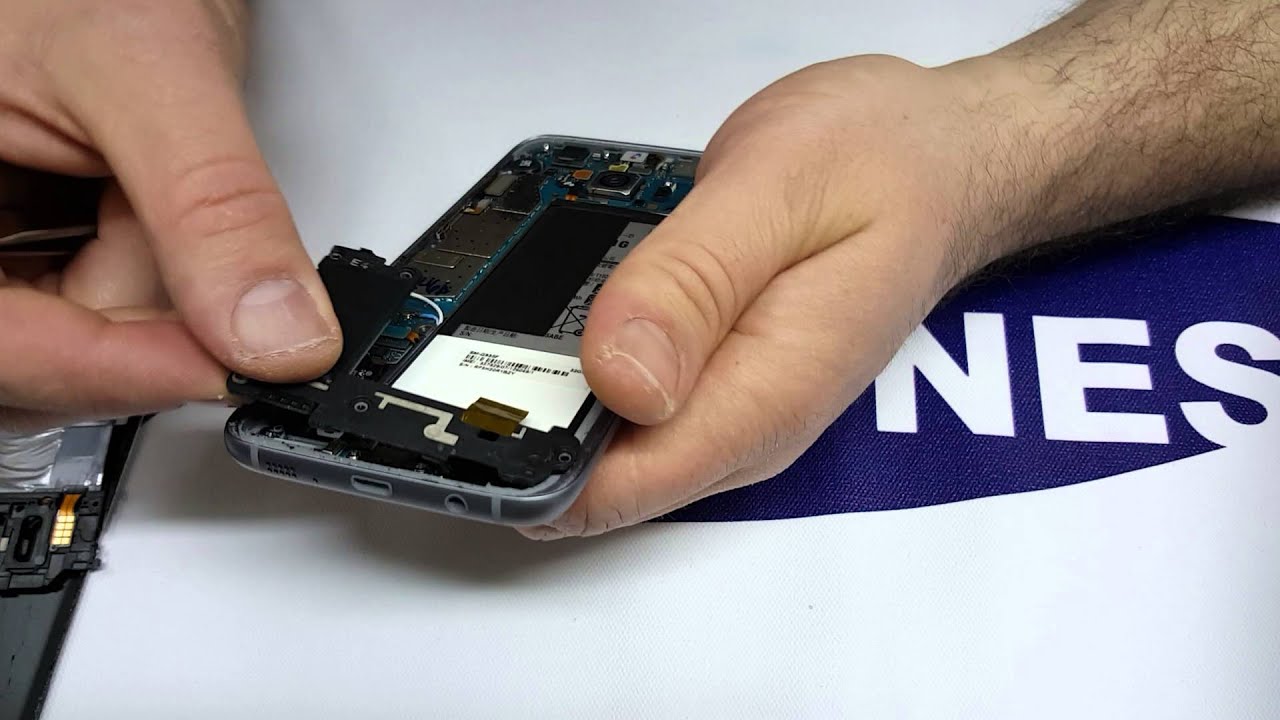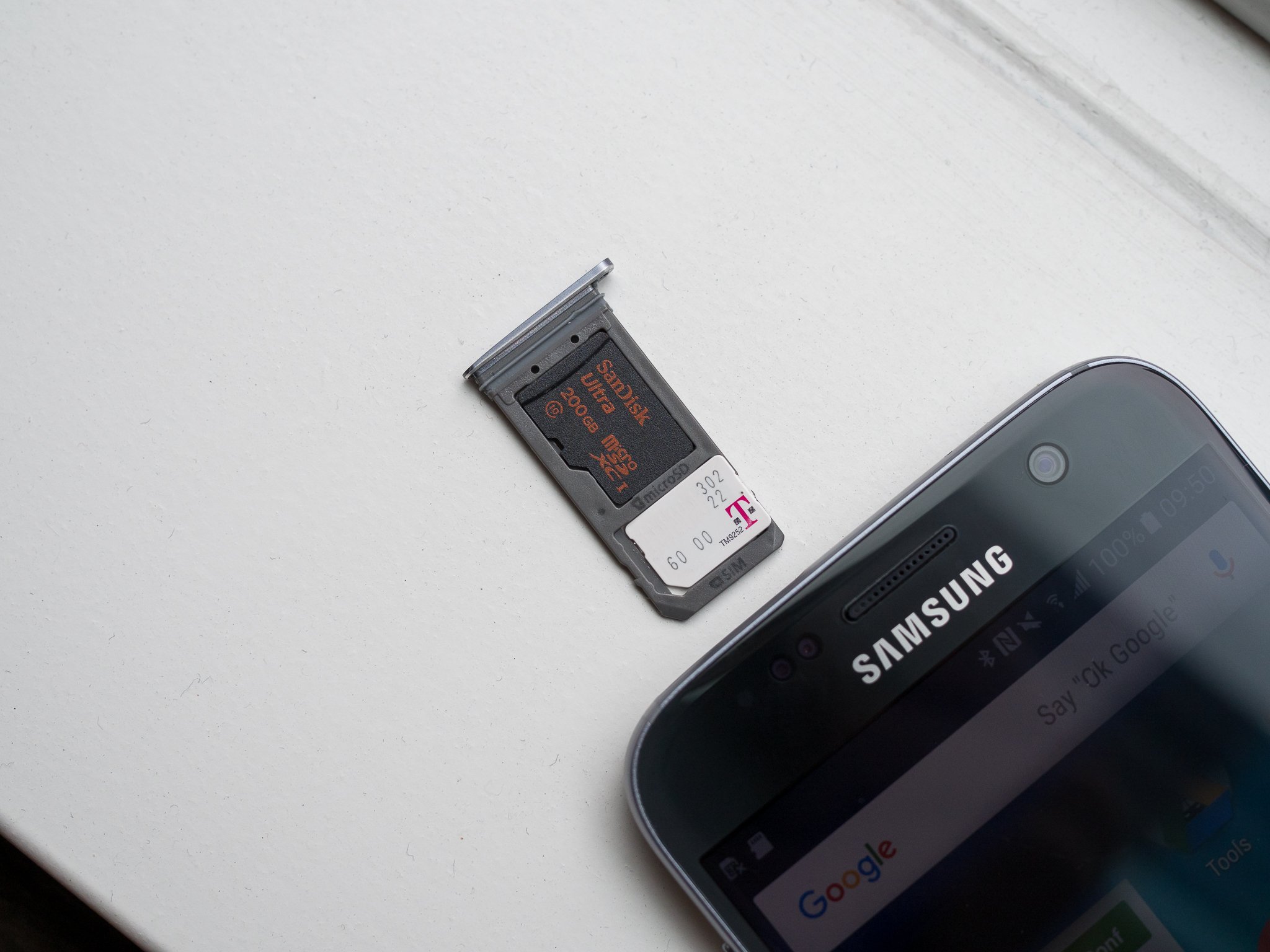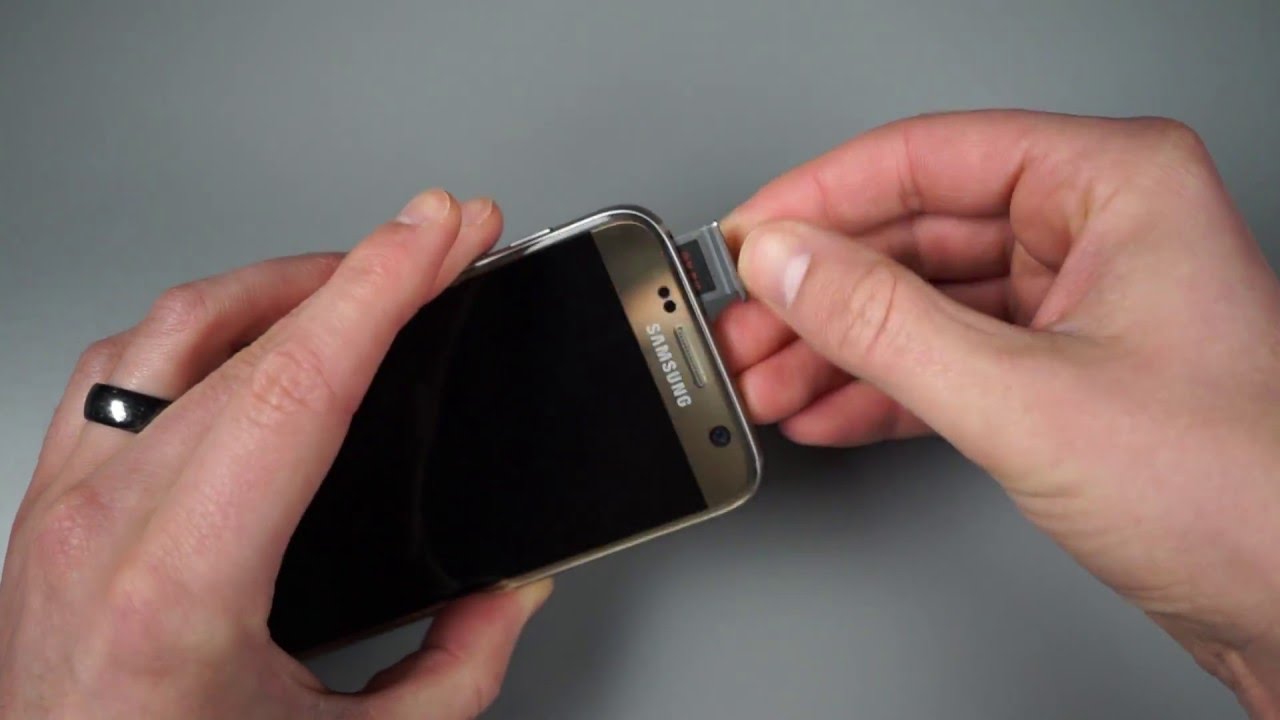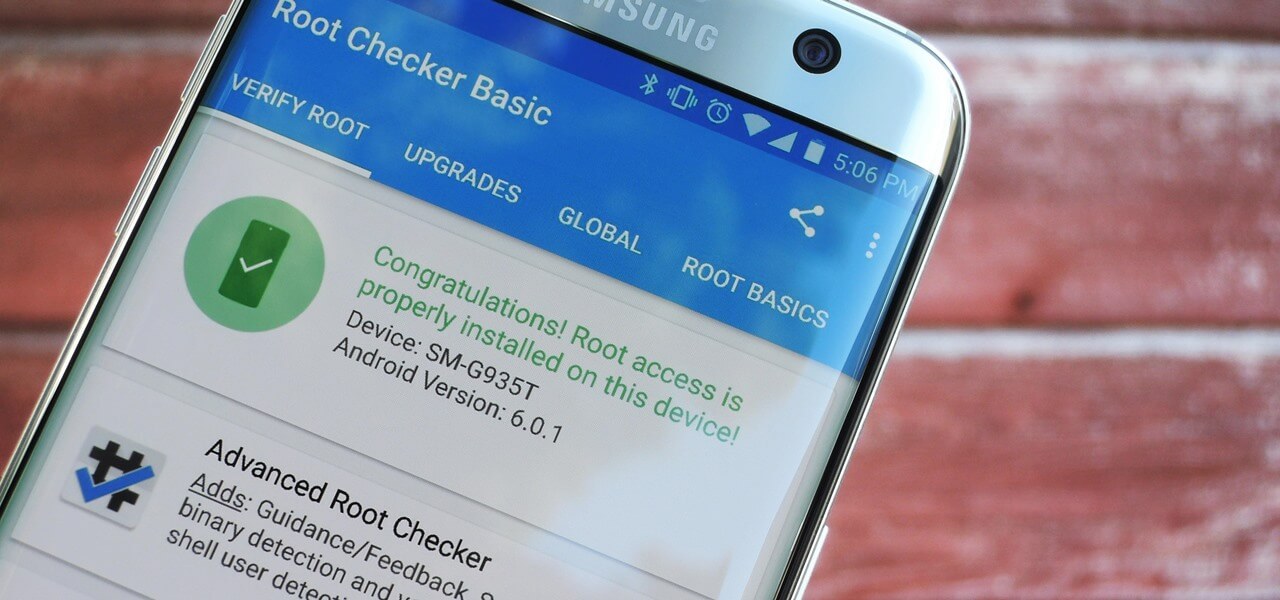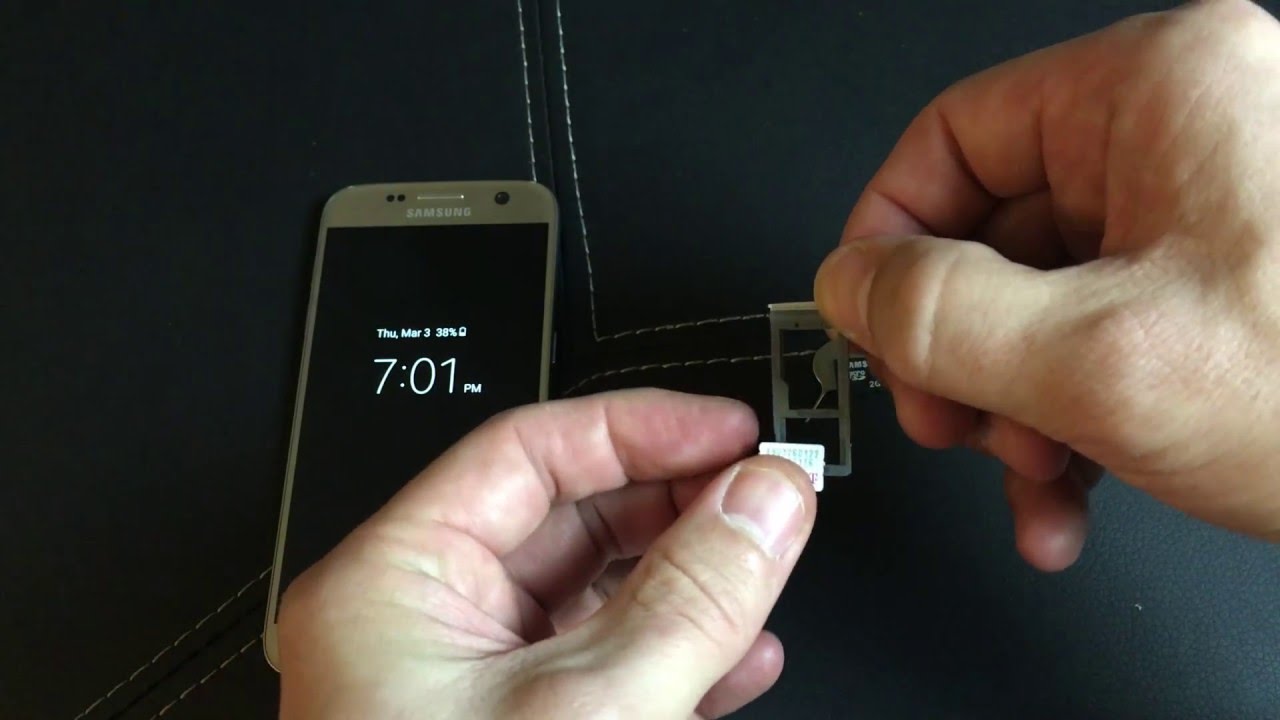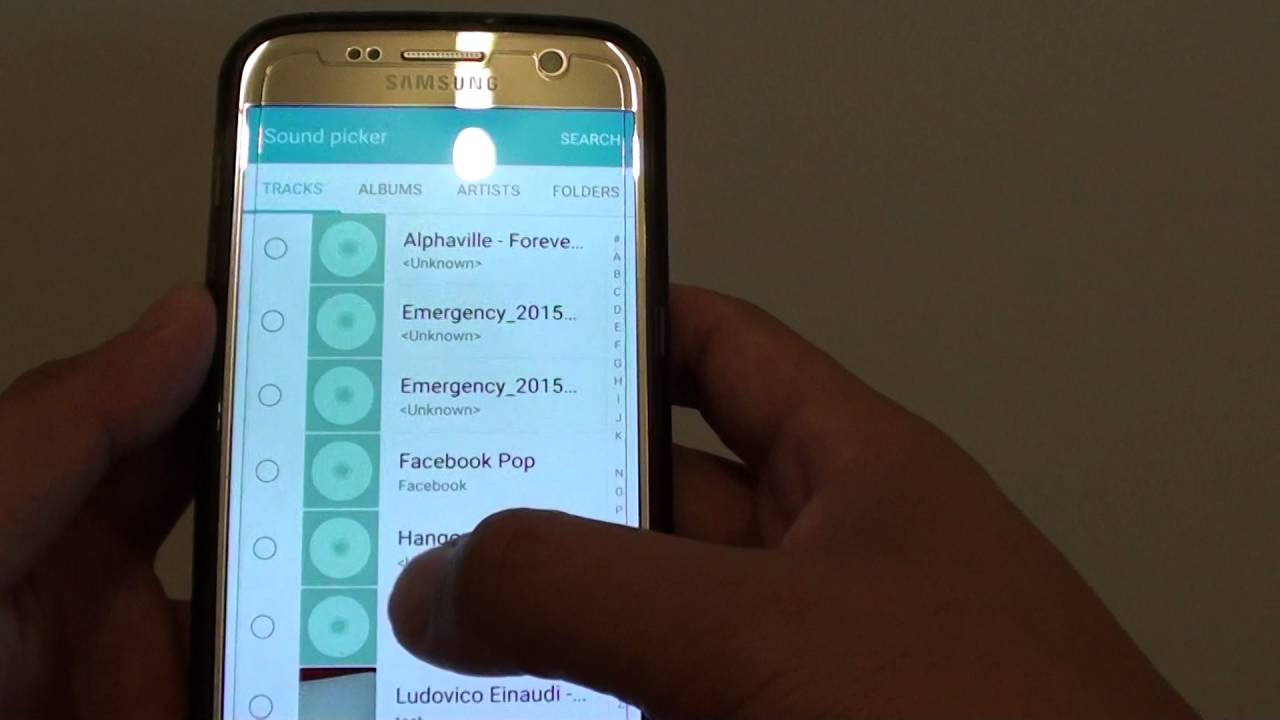Introduction
Welcome to this guide on how to remove a virus from your Samsung Galaxy S7. It can be a frustrating experience to discover that your device has been infected with a virus or malware. Viruses can slow down your phone’s performance, drain the battery, and even compromise your personal information. However, with the right knowledge and steps, you can effectively remove the virus and restore your device to its optimal state.
In this article, we will walk you through the process of identifying a virus on your Samsung Galaxy S7 and provide you with step-by-step instructions on how to remove it. We will also guide you on how to back up your data before taking any action to avoid potential data loss.
It’s important to note that viruses on Android devices are relatively rare compared to other platforms. However, it’s always better to be safe than sorry, so if you suspect that your phone has been infected, it’s essential to take immediate action.
Before we proceed, it’s important to mention that prevention is key. By following some preventive measures, such as avoiding downloading apps from unknown sources and keeping your device’s operating system up to date, you can significantly reduce the risk of infection.
Now, let’s dive into the steps you can take to remove a virus from your Samsung Galaxy S7 and ensure your device is safe and secure.
Part 1: Identifying the Virus
The first step in removing a virus from your Samsung Galaxy S7 is to identify if your device has indeed been infected. Here are some common signs that may indicate the presence of a virus:
- Unusual Battery Drain: If your phone’s battery life is draining rapidly, even when you’re not actively using it, it could be a sign of a virus. Malicious apps often run in the background, consuming significant resources and causing your battery to deplete quickly.
- Slow Performance: Is your Samsung Galaxy S7 suddenly sluggish and unresponsive? This could be a result of a virus infecting your device. Viruses can use up your phone’s processing power, causing apps to load slowly and overall performance to suffer.
- Unfamiliar Apps or Pop-ups: Have you noticed any new apps on your phone that you didn’t install? Or are you frequently encountering intrusive pop-up ads? These are both indicators of a virus or malware infection. Scammers often use these tactics to distribute malicious software.
- Increased Data Usage: If your data usage has spiked significantly, without any changes in your usage patterns, it may be due to a virus. Some malware apps can consume data in the background, leading to excessive data usage.
- Unwanted Redirects: Are you being redirected to unfamiliar websites or seeing constant browser pop-ups? These activities are often associated with malware infections. Virus-infected devices can be manipulated by hackers to redirect users to phishing sites or other malicious pages.
If you notice any of these signs on your Samsung Galaxy S7, it’s important to take action immediately to prevent further damage to your device and personal information.
Part 2: Backup Your Data
Before proceeding with any virus removal steps, it is crucial to back up your data to ensure that you don’t lose any important files or information. Here’s how you can back up your data on your Samsung Galaxy S7:
- Connect to Wi-Fi: Ensure that your phone is connected to a stable Wi-Fi network to avoid using your mobile data for the backup process.
- Use Samsung Cloud: Samsung Galaxy S7 users can take advantage of the built-in Samsung Cloud service to back up their data. To use Samsung Cloud, go to Settings, then Cloud and Accounts, and select Samsung Cloud. From there, you can choose which data you want to back up, such as photos, contacts, and apps.
- Google Backup: Another backup option is Google Backup, which allows you to save your important data to your Google account. Go to Settings, then Accounts, and select Google. From there, you can enable the backup for various categories like app data, contacts, and photos.
- External Storage: If you prefer to have full control over your backups, you can manually transfer your files to an external storage device or your computer. Connect your Samsung Galaxy S7 to your PC via a USB cable and use the file transfer function to save your desired files to a secure location.
Remember to make a comprehensive backup of your data to ensure that everything is safely stored. It’s always better to be safe than sorry, especially during virus removal processes. Once your data is backed up, you can proceed with confidence, knowing that your files are secure.
It’s important to note that regular backups are recommended to keep your data protected. Consider setting up automatic backups or establishing a routine to manually back up your data periodically.
Part 3: Put Your Device in Safe Mode
Putting your Samsung Galaxy S7 in Safe Mode can help you isolate and identify any malicious apps that may be causing the virus infection. Safe Mode temporarily disables all third-party apps, allowing you to narrow down the source of the problem. Here’s how you can put your device in Safe Mode:
- Power Off: Press and hold the power button on your Samsung Galaxy S7 until the power options menu appears.
- Long-Press Power Off: Once the power options appear, long-press the “Power Off” option until a prompt appears to enter Safe Mode.
- Tap “OK”: Tap “OK” to confirm and restart your device in Safe Mode.
- Check Safe Mode: Once your device restarts, you will see “Safe Mode” displayed in the bottom left corner of the screen.
In Safe Mode, only the pre-installed system apps will be active, and all third-party apps will be temporarily disabled. This allows you to determine if the virus is caused by a specific app that you have installed.
While in Safe Mode, observe your device’s behavior. If you no longer experience the virus symptoms, it is likely that one or more of your installed apps is causing the issue. You can proceed to the next step to uninstall suspicious apps.
If the virus symptoms persist even in Safe Mode, it may indicate a more advanced or system-level infection. In such cases, it is recommended to run a mobile security app or proceed with a factory reset as a last resort.
Once you have completed your analysis in Safe Mode, you can exit this mode by restarting your device normally. Remember that Safe Mode is only a diagnostic tool and not a permanent solution for removing viruses.
Part 4: Uninstall Suspicious Apps
If you have identified suspicious apps while in Safe Mode or suspect that certain apps may be the cause of the virus infection, it’s crucial to uninstall them from your Samsung Galaxy S7. Removing these apps can help eliminate the source of the virus and restore the security of your device. Follow these steps to uninstall suspicious apps:
- Go to Settings: Open the Settings app on your Samsung Galaxy S7.
- Select Apps: Scroll down and select the “Apps” or “Applications” option. This will open a list of all the apps installed on your device.
- Identify Suspicious Apps: Look through the list of apps and identify any that you suspect may be causing the virus infection. Pay attention to apps that you didn’t install or those that have unusual names or icons.
- Select and Uninstall: Tap on the suspicious app to open its details page. From there, select the “Uninstall” button to remove the app from your device. Follow the prompts to complete the uninstallation process.
- Repeat if Necessary: If you have identified multiple suspicious apps, repeat the uninstallation process for each of them until all potential sources of the virus have been removed.
It’s important to note that some malicious apps may attempt to disguise themselves by using generic names or icons that resemble system apps. Exercise caution when identifying suspicious apps and focus on any that you don’t remember installing or that have poor reviews and ratings.
After removing the suspicious apps, it’s recommended to restart your Samsung Galaxy S7 to ensure that any residual traces of the virus are cleared from your device’s memory. Once your device has restarted, monitor its performance to see if the virus symptoms have subsided. If the symptoms persist, proceed to the next step of running a mobile security app.
Part 5: Run a Mobile Security App
Running a mobile security app is an effective way to scan and remove any remaining viruses or malware from your Samsung Galaxy S7. These apps are designed to detect and eliminate threats, providing an extra layer of protection for your device. Follow these steps to run a mobile security app:
- Choose a Mobile Security App: There are several reputable mobile security apps available for Android devices, such as Avast Mobile Security, McAfee Mobile Security, and AVG Antivirus. Choose the one that suits your preferences.
- Download and Install: Open the Google Play Store on your Samsung Galaxy S7 and search for the chosen mobile security app. Select it and tap the “Install” button to download and install the app on your device.
- Open the App: Once the installation is complete, open the mobile security app from your app drawer or home screen. Follow any initial setup instructions provided by the app.
- Run a Scan: Look for an option to run a full device scan or a virus/malware scan within the app. Tap on this option to initiate the scan. The app will then analyze your device’s files, apps, and system for any malicious content.
- Follow the Recommendations: Once the scan is complete, the mobile security app will provide you with a report on the detected threats. If any viruses or malware are found, follow the instructions provided by the app to remove them from your device.
- Enable Real-time Protection: To further safeguard your Samsung Galaxy S7, consider enabling the real-time protection feature within the mobile security app. This will continuously monitor your device for any suspicious activity and prevent potential virus infections in real-time.
Running a mobile security app regularly is essential for the ongoing protection of your device. Consider scheduling periodic scans or enabling automatic scanning to ensure that your Samsung Galaxy S7 remains free from viruses and malware.
Remember to keep your mobile security app updated to ensure that you have the latest virus definitions and security features. Additionally, exercise caution when downloading apps from third-party sources and be mindful of the permissions requested by the apps you install to minimize the risk of future infections.
Part 6: Clear Cache and Data
Clearing the cache and data of your apps can help remove temporary files and potentially corrupted data that may be associated with the virus on your Samsung Galaxy S7. This step can also help improve the overall performance of your device. Follow these steps to clear the cache and data:
- Go to Settings: Open the Settings app on your Samsung Galaxy S7.
- Select Apps: Scroll down and select the “Apps” or “Applications” option. This will display a list of all the apps installed on your device.
- Select an App: Choose an app that you suspect may be affected by the virus. For example, if you noticed suspicious behavior in your web browser, select the browser app.
- Clear Cache: On the app’s details page, you will find the option to “Clear Cache.” Tap on this option to clear the temporary files stored by the app.
- Clear Data: If clearing the cache does not resolve the issue, you can proceed to clear the app’s data. Tap on the “Clear Data” option to delete all the data associated with the app.
- Repeat if Necessary: Repeat the process for other apps that you suspect may be affected by the virus. Clearing cache and data for multiple apps can help ensure that any corrupted files are removed.
It’s important to note that clearing the data of an app will result in the loss of any saved preferences or settings for that particular app. However, it may also eliminate any virus-related data that might be causing the infection.
After clearing the cache and data of the suspected apps, restart your Samsung Galaxy S7 to allow the changes to take effect. Monitor your device’s performance to see if the virus symptoms persist. If they do, you may need to consider more advanced measures, such as a factory reset.
Clearing cache and data should be done with caution and only for apps that you suspect to be infected. Avoid clearing cache and data for essential system apps, as it may cause unintended consequences or disrupt the normal functioning of your device.
Part 7: Reset Your Samsung Galaxy S7
If all previous steps fail to remove the virus from your Samsung Galaxy S7, performing a factory reset can be a last resort. A factory reset will erase all data on your device and restore it to its original factory settings, removing any viruses or malware in the process. Here’s how you can reset your device:
- Back Up Your Data: Before proceeding with a factory reset, make sure to back up all important data, as it will be permanently deleted during the process. Refer to Part 2 for instructions on how to back up your data.
- Open Settings: Go to the Settings app on your Samsung Galaxy S7.
- Select General Management: Scroll down and select the “General Management” option.
- Tap Reset: From the General Management menu, tap on the “Reset” option.
- Select Factory Data Reset: Choose the “Factory Data Reset” option from the Reset menu.
- Confirm the Reset: Read the warning message and tap on “Reset Device” or “Delete All” to confirm the factory reset. Your device will begin the reset process.
- Wait for Reset to Complete: Your Samsung Galaxy S7 will reboot and proceed with the factory reset. This process may take a few minutes.
After the factory reset is complete, your device will be restored to its original state. You can then set it up as a new device and reinstall your apps and data from the backup you created earlier.
It’s important to note that a factory reset should only be performed as a last resort, as it will remove all data from your device. Before proceeding, consider seeking professional assistance or contacting Samsung support for further guidance.
Remember to be cautious when reinstalling apps after the factory reset. Stick to trusted sources such as the Google Play Store and only download apps from reputable developers to minimize the risk of future virus infections.
Part 8: Preventing Future Infections
Now that you have successfully removed the virus from your Samsung Galaxy S7, it’s essential to take measures to prevent future infections. By following these preventive steps, you can significantly reduce the risk of viruses or malware infiltrating your device:
- Download Apps from Trusted Sources: Stick to reputable sources such as the Google Play Store to download and install apps on your device. Avoid downloading apps from third-party sources, as they may not undergo the same level of security checks.
- Keep Your Apps & Operating System Updated: Regularly check for available updates for both your apps and your device’s operating system. Updates often include security patches that address vulnerabilities and protect against emerging threats.
- Enable App Permissions Carefully: When installing new apps, be cautious when granting permissions. Some apps may request access to unnecessary information and functions. Only grant permissions that are essential for the app’s functionality.
- Install a Mobile Security App: Consider installing a reliable mobile security app from a reputable provider. These apps can provide real-time protection, scanning for viruses or malware in real-time, and alerting you to potential threats.
- Be Wary of Suspicious Links & Emails: Avoid clicking on suspicious links or opening emails from unknown senders. These can be sources of phishing attempts or malicious files that can infect your device. Exercise caution when browsing the internet or opening attachments.
- Regularly Back Up Your Data: Make it a habit to regularly back up your important data. This will ensure that even if your device is infected, you won’t lose critical information. Consider using automatic backup options or cloud storage services for convenience.
- Use Secure Wi-Fi Networks: Only connect to trusted and secure Wi-Fi networks. Public networks with weak security can make your device more susceptible to hacking or data interception. If necessary, use a virtual private network (VPN) for added security.
- Educate Yourself: Stay informed about the latest security threats and best practices for mobile device security. Stay updated on common scam tactics and learn how to identify potential threats. By being knowledgeable, you can better protect yourself and your device.
By following these preventive measures, you can create a safer environment for your Samsung Galaxy S7 and minimize the risk of future virus infections. Remember, prevention is key in maintaining the security and integrity of your device.
Conclusion
Having a virus on your Samsung Galaxy S7 can be a frustrating and worrisome experience. However, by following the steps outlined in this guide, you can effectively remove the virus and restore your device’s security and performance.
It all starts with identifying the virus through signs such as unusual battery drain, slow performance, unfamiliar apps or pop-ups, increased data usage, and unwanted redirects. Once the virus is identified, you can take action by backing up your data, putting your device in safe mode, and uninstalling suspicious apps.
If the virus persists, running a mobile security app can help detect and remove any remaining threats. Clearing the cache and data of your apps can also eliminate corrupted files. In extreme cases, a factory reset may be necessary to completely remove the virus.
To prevent future infections, download apps from trusted sources, keep your apps and operating system updated, be cautious with app permissions, install a mobile security app, and back up your data regularly. Additionally, use secure Wi-Fi networks, be skeptical of suspicious links and emails, and educate yourself on the latest security threats and best practices.
Remember, staying vigilant and proactive in maintaining the security of your Samsung Galaxy S7 is crucial. With the right knowledge and preventive measures, you can keep your device free from viruses and enjoy a safe and seamless mobile experience.







